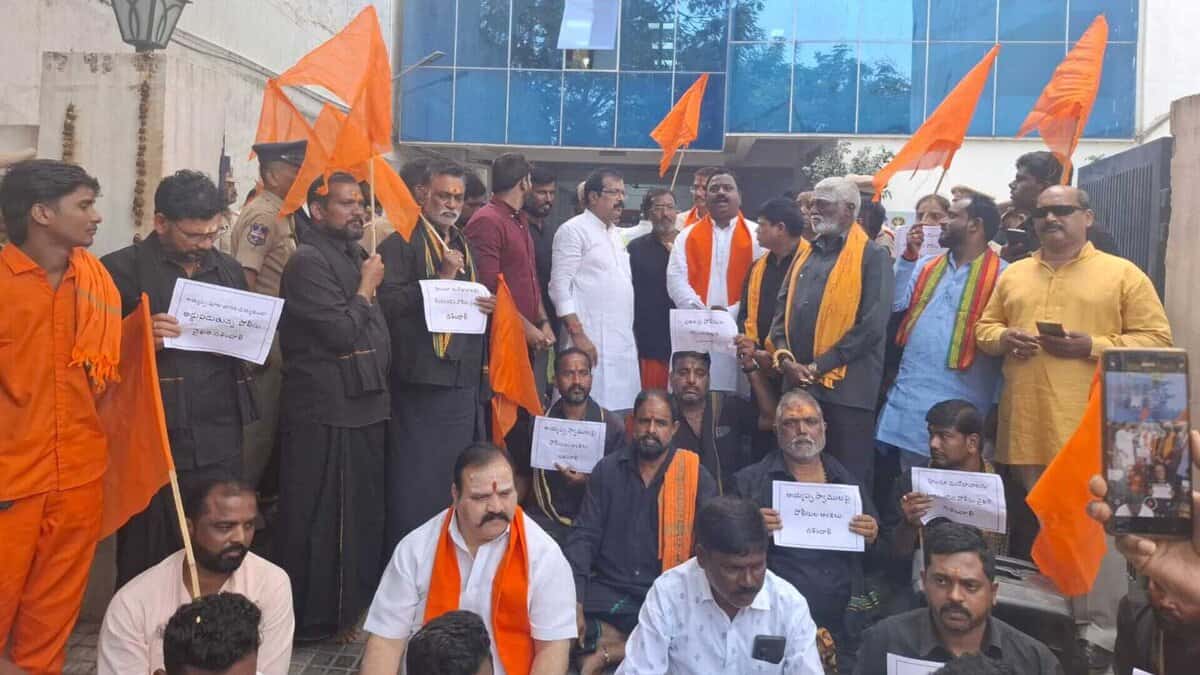For decades, Indian leaders boasted of the country’s “potential,” but it frequently sounded like a promise postponed. The figures now reveal a different picture. India is currently ranked as a major power in Asia by the Lowy Institute’s 2025 Asia Power Index, with a comprehensive power score above 40 and a strong third place behind only the US and China. In other words, India is now in the center of Asia’s geopolitical balance rather than on the outside of discussions about great powers.
This change did not occur by coincidence or in a vacuum. Over the last decade, under Prime Minister Narendra Modi, India has attempted to transition from a cautious “balancing power” to a more confident “leading power,” a phrase Modi popularised and envisioned under his regime. Even if there are still significant obstacles, the most recent data from Lowy, the World Bank, the IMF, and significant think tanks indicate that this goal currently depends on increasingly strong strategic and economic foundations.
A new label: Major power in Asia
The Asia Power Index is a comprehensive quantitative ranking that uses 131 indicators across eight broad measures which are economic capability, military capability, resilience, future resources, economic relationships, defence networks, diplomatic influence, and cultural influence, to assess the relative power of 27 states, ranging from Pakistan to New Zealand. It is not a feel-good pamphlet. This makes the pace of development of India all the more essential.
India’s influence in Asia “continues to grow steadily,” according to Lowy’s 2025 edition, and its overall power score has, for the first time, surpassed the 40 point level that the Index considers to be indicative of a “major power.” In addition to holding onto the third spot it first took in 2024, India also gains ground on Japan, which is still barely below the major power cutoff.
However, Lowy acknowledges that India’s ascent is still unfinished. It emphasizes that India’s power is still “well below the potential of its resources” and that there is a significant “power gap” between the country’s actual impact and what its resources indicate it could accomplish. India’s current story is summed up by the twin image of quick rise but untapped potential.
The economic engine behind India’s ascent
Economic strength is ultimately what determines power, and India’s position has drastically shifted in this regard. Despite a difficult global climate, India’s economy continued to grow at the quickest rate among major economies, rising by roughly 6.5% in FY24/25, according to the World Bank’s India Overview. Further back, the India Development Update notes that solid manufacturing, resilient services, and significant public infrastructure investment drove India’s 8.2% growth in FY23/24.
According to multilateral forecasts, this is not a singular increase. India’s Ministry of Finance referenced the April 2025 IMF World Economic Outlook, which states that India would continue to be the fastest-growing major economy for the next two years and anticipates growth rates of 6.2% in 2025 and 6.3% in 2026. A estimate of approximately 6.7% growth, far higher than the global average, is also highlighted in a different World Bank linked report from early 2025.
This consistent momentum has significant implications. India’s Chief Economic Advisor has stated that the nation’s GDP has already surpassed $3.9 trillion and is expected to surpass $4 trillion in FY 2025–2026. IMF statistics indicates that the $5 trillion level is probably a few years away. This is a huge shift for a nation whose economy was just about $2 trillion ten years ago.
This reality is reflected in the Lowy Index. According to the 2025 edition, India’s economic capability, a composite of size, technology, connectivity, and international leverage has grown. In a startling change, Lowy also notes an improvement in India’s economic ties for the first time since the Index’s inception. According to ten-year cumulative capital flows, India has surpassed China to become the most desirable location for inward investment after the United States, despite the country’s still developing Asian trade ties. With its promise of a stable, rules-based market democracy, New Delhi has been counting on precisely this kind of geoeconomic reorganization.
In this case, it is hard to overlook the policy decisions made by the Modi administration. The Goods and Services Tax (GST) regime, the Insolvency and Bankruptcy Code, digital public infrastructure like UPI and Aadhaar linked direct benefit transfers, and an aggressive push for roads, ports, railroads, and power have all undergone structural reforms over the past ten years in New Delhi. The importance of Production Linked Incentive (PLI) programs in industries like solar PV, advanced cell batteries, and specialty steel is further highlighted by international evaluations of India’s industrial and climate strategy, which integrate industrial policy with a net-zero 2070 goal.
Modi’s “leading power” vision is based on these economic reforms, which go beyond simple technocratic changes. If a nation isn’t growing faster than its peers, drawing in investment, and developing its industrial capacity, it can’t legitimately claim a seat at the top table of the world economy. In these areas, the evidence is increasingly stacked in India’s favor.
Hard power: Geography, military capability and the Indian Ocean
Economic strength is required but not sufficient. India’s increasing hard power status in Asia is highlighted by both the Asia Power Index and strategic literature.
According to Lowy’s 2025 study, India’s military capability has progressively increased, partly due to recent operational experience and improved expert assessments of its troops. It even uses the May 2025 launch of “Operation Sindoor” as an illustration of how India is expanding its fighting experience in ways that affect views in the region. Only the United States, China, and Russia rank higher among Asian actors in terms of overall military capabilities than India.
Geographical factors contribute to this military profile. India has significant influence over maritime trade and security due to its location, which dominates the Indian Ocean and sits atop the major sea routes from the Gulf to the Malacca Strait. The strategic significance of the Andaman and Nicobar Islands, India’s coastline, and its increasing capacity to project power into the larger Indo-Pacific through naval deployments and cooperative drills are highlighted in contemporary Indo-Pacific assessments.
It is evident that India has viewed this geography as a strategic advantage rather than a passive inheritance under the Modi administration. Defence modernisation has been associated with “Aatmanirbhar Bharat” (self-reliance) in defence manufacturing, maritime domain awareness, and naval infrastructure have drawn renewed attention. India has strengthened military logistics and interoperability agreements with important allies, ranging from Australia and Japan to the United States and France. A portion of this narrative is captured by the Lowy Index’s measure of defence networks, which monitors alliances, defence diplomacy, and international partnerships.
Once more, the trend is evident. India is now viewed as a crucial maritime player in the Indo-Pacific balance of power rather than just a continental power concentrated on its land borders.
Diplomacy and the Modi-Jaishankar doctrine: From Non-alignment to multi-alignment
Diplomacy is a rising power’s nerve system if economic might and military might are its spine. Under PM Modi and External Affairs Minister S. Jaishankar, India’s progress in this area has been especially noticeable.
According to the 2025 Asia Power Index, India’s diplomatic influence has somewhat increased due to more active diplomacy as measured by bilateral discussions and expert evaluations of the country’s improved diplomatic service. It also emphasizes how India’s cultural influence has increased, primarily as a result of increased interpersonal interactions and improved air travel, especially new direct links like the one between India and Brunei.
The report also subtly warns that India’s ranking for Prime Minister Narendra Modi’s regional and global leadership did not improve despite the country’s apparent activism. This suggests that India’s strategy of multi-alignment, strategic autonomy, and leadership of the Global South does not automatically translate into rapidly expanding strategic influence. Here, analysis from important think tanks aids in understanding New Delhi’s intentions.
According to Ashley Tellis’s study for the Carnegie Endowment titled “India as a Leading Power,” Modi’s proposal for India to become a leading power represents a conceptual shift away from the more traditional rhetoric of cautious balancing and non-alignment. According to Tellis, a “leading power” is basically a great power, a state that uses strong governmental institutions, solid economic foundations, and reliable military prowess to influence its surroundings. He presents a challenging argument. Only by strengthening those three pillars over decades would India be able to attain that status.
Other analyses describe the Modi-Jaishankar Doctrine as a pragmatic mix of issue based coalitions, strategic autonomy, and multi-alignment, in which India collaborates with Western partners on technology and Indo-Pacific security, maintains close ties with Russia on energy and defense, and advocates for the Global South on development and climate. An excellent illustration of this diplomatic balancing act is how India managed its G20 presidency, positioning itself as a voice for the Global South while keeping all major powers, including the West and Russia, at the table.
In other words, Modi’s foreign policy has attempted to use India’s strategic and economic clout as diplomatic leverage while remaining independent of any particular bloc. According to Lowy’s analysis, New Delhi still has a ways to go before the rest of Asia fully internalizes India as a default leader, even though this strategy has begun to pay off in terms of influence.
Soft power, diaspora and Digital India
India’s rise is fueled by soft power, including its culture, people, and digital reach, in addition to hard figures and military rankings. India is ranked among the top Asian states in terms of cultural influence by the Asia Power Index, which highlights the country’s increasing appeal as a tourist and tourism destination, its growing educational connections, and the amount of people-to-people interactions with other Index nations. This reservoir of goodwill is bolstered by India’s vast diaspora, music and film industries, yoga, food, and literature.
Digital India has taken on a new dimension in recent years. India’s digital public infrastructure, particularly UPI and Aadhaar linked services, has been cited by international observers from development banks to commercial consultancies as a model for financial inclusion and e-governance in emerging nations. A purposeful soft power strategy that supports the hard power narrative includes Modi’s enthusiastic utilization of diaspora gatherings, the international promotion of the International Day of Yoga, and the export of India’s digital stack.
The feet of clay debate: Constraints inside the rise
India’s internal limitations cannot be disregarded in any meaningful evaluation of its rise. It’s interesting to note that some of the most skeptical evaluations still begin with the idea that India is a rising power; their argument focuses on the strength of its foundations rather than the reality of its rise. This is exactly how the topic is framed in a study report titled “India’s Rise: On Feet of Clay?” by the German think tank Stiftung Wissenschaft und Politik (SWP). While acknowledging India’s increasing international prominence, Christian Wagner’s research highlights socioeconomic disparities, administrative bottlenecks, state capacity shortcomings, and governance issues as potential roadblocks to long term power.
Tellis presents a similar argument from a different perspective, the “leading power” objective will remain aspirational unless India keeps strengthening its state institutions, modernizing its military, and deepening its economic reforms. These criticisms are significant because they highlight the fact that India’s biggest strategic issue is internal change rather than only external conflict.
Even these skeptics, however, are unable to ignore a fundamental reality, which is that India is already regarded in international studies as a crucial pole in Asia’s developing multipolar order. The question now is not whether India is rising, but rather how quickly and how far it can go, as well as whether domestic reforms can meet the expectations raised by its exterior posture.
Conclusion: From potential to responsibility
The narrative surrounding India has changed in less than a generation. With a total score above 40 and a definite third place in the regional hierarchy, it is now seen by Lowy as a major power in Asia, having previously been characterized as a “potential power” perpetually restrained by its inherent contradictions. Both the World Bank and the IMF predict that in the upcoming years, India’s economy would continue to grow at the fastest rate among major economies, with growth rates continuously above 6%. Its military might and defense networks are continuously growing, its economy is approaching $4 trillion, and its diplomatic activism from G20 leadership to outreach to the Global South has become unavoidable.
India has changed its perception of itself under Narendra Modi. It is no longer satisfied with being a cautious balancer, instead, it speaks openly as a “leading power” and serves as a vital swing state in the Indo-Pacific. That goal is still being worked toward. Tellis’s stress on the need for more significant institutional and economic reforms, SWP’s concerns about the “feet of clay,” and Lowy’s “power gap” all serve as reminders that the road is not yet complete.
However, for the first time in decades, the world’s most reputable indexes, projections, and think-tank assessments are supporting the claims made by India’s leadership since 2014 that the country is an emerging pole in the global system rather than just another developing market. It will take time, reform, and self-control to transform that position into long-term, stable leadership. However, the direction of travel is clearly visible. The era of India as a long-term “potential power” has ended, and the era of India as a responsible big power has quietly but firmly begun.
















































